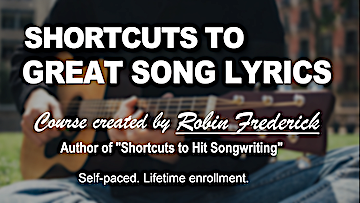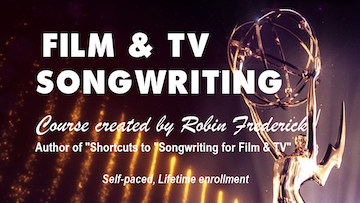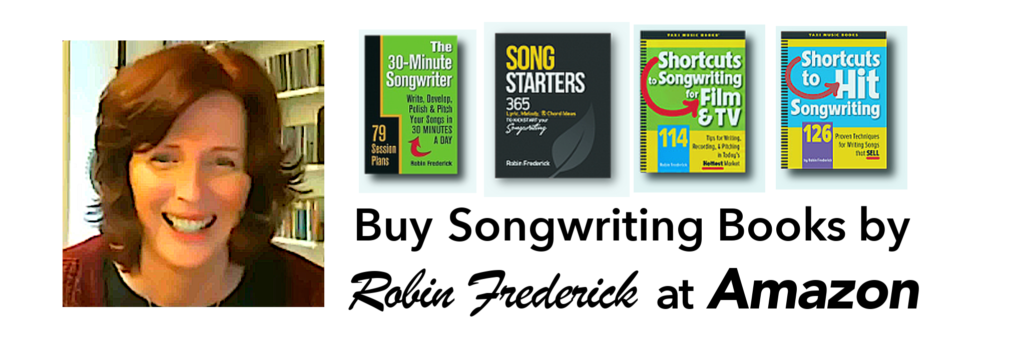Whether you are singing your own song or hiring a singer, know what you need from a vocal performance before you start recording.
THE MOST IMPORTANT THING ABOUT A VOCAL
If you ask most people what they think a good vocal must have, they’ll tell you that it’s all about pitch. A singer has to sing in tune. They might occasionally mention rhythm, but it’s usually pitch.
Truth is, the most important thing about a vocal is how it makes us feel. A vocal performance that creates an authentic, emotional experience for the listener is a great vocal. That’s the only thing that really counts.
So, what are the elements of a vocal performance that are absolutely essential to making this happen?
VOCAL PITCH
As far as I can tell, there’s only one rule when it comes to vocal pitch: If listeners are likely to be distracted by the singer’s pitch—whether it’s one note or a lot of notes—then you need to fix it. A listener who is hearing something “off” or sour in the vocal will not be able to fully engage with the song because the voice is pulling their attention away from it.
No singer nails every note perfectly. In fact, there has to be room for the scoops and falls, swoops and slides that bring a vocal to life. You only need to hit the note pitch often enough to convince listeners that they’re hearing someone who knows what the melody is and where the notes are.

There are plenty of successful singers with what I call “personal pitch.” They often land consistently under the note (Tom Petty, Stevie Nicks, The Lumineers, Taylor Swift). Or arrive at the pitch sometime during the note (Bob Dylan, Colter Wall, Cat Power). But they all hit the pitch close enough and consistently enough to satisfy listeners.
Of course, the approach to pitch is different in different music styles. In Americana and Singer-Songwriter, pitch is looser and more personal. In Mainstream Pop, Pop/Dance, and EDM, everything is as close to “in tune” as electronics can make it.
TIP: If a singer is thinking about pitch instead of feeling the emotion of the song, listeners can sense that. They know when a singer is not fully committing to the emotion. No one ever questioned whether Tom Petty was committed to what he was singing.
Instead of thinking about whether you’re singing on pitch or not, focus on the feeling and the meaning of the lyric. Speak the words with lots of emotion, right before you record your vocal. If a hired singer is thinking too much about pitch, you can ask them to do the same thing. Interestingly, the change of focus—from note pitch to emotion—can fix a lot of pitch issues.
VOCAL PHRASING
Vocal phrasing refers to where the notes and words land in relation to the underlying rhythmic groove of the song. Good phrasing has a confident, conversational feel, even when the song is highly emotional.

In the acoustic genres like Americana, Singer-Songwriter, and Country, vocal phrasing has a very natural feel, as if the singer just thought of the words. The listener feels as if they’re eavesdropping on the singer’s thoughts.
In these genres, the underlying beat of the track guides the singer, but still allows for plenty of flexibility in the phrasing. The voice is connected to the beat like a rubber band; it can lay back or stretch ahead and around the beat as the singer feels it. To hear this style of vocal phrasing, check out Thomas Rhett (Country), Adele (Pop), Donovan Woods (Singer-Songwriter), and Lucinda Williams (Americana).
Some artists, like Lewis Capaldi, Ed Sheeran, and Dermot Kennedy, are taking Singer-Songwriter phrasing in a more rhythmical, mainstream Pop direction. These artists appear on the Pop charts where rhythmical phrasing is the name of the game.
Rhythmical Phrasing
In the Pop, Pop/Dance, and EDM genres, the vocal is closely married to the underlying groove of the song. If your song is in one of these genres, you’re going to need a singer who can capture the rhythm of the track in the vocal performance.

It’s a challenge to sing rhythmically while conveying the emotion of the lyric at the same time. A choppy, drum-machine performance won’t cut it. The singer needs to bring a human swing to it, a good feel for creative, syncopated rhythmic flow, as well as an emotionally believable delivery. It’s a tall order. You may need to hire a singer for this style and they tend to be expensive. If you’re going to sing it yourself, study the hits in this genre and sing along to embed the style.
– Try It Now –
Listen to some of the top Dance/Pop, Pop, and EDM singers. Notice how their vocal adds to the rhythmic feel of the song, while still maintaining the energy and emotion of the lyric. Some of the greats in this style are Katy Perry, Dua Lipa, Ryan Tedder (OneRepublic), Andrew Taggert (The Chainsmokers), and Alessia Cara. Look up recent Dance and Pop/Dance hits to hear more.
VOCAL CHARACTER
Don Was, the great musician and record producer, once told a story about producing a vocal for Mick Jagger. Jagger did three takes of the song but Don Was felt that none of them were anywhere near usable. How do you tell someone like Mick Jagger his vocals aren’t cutting it?
But then, on the fourth take, Jagger arched his back, tucked his elbows into the familiar “chicken-strut” position, his lips took on the signature big-lip pout and suddenly the vocal came alive. They got the take when Mick Jagger got into his character as “Mick Jagger.”
I’ve always remembered that story because it shows how important character is in vocal performance. Who is the unique person who is singing? What has made them who they are? Brought them to this moment? Are they happy, miserable, exhausted, triumphant? The voice has to tell us all that. The lyric puts words to it, but the voice has to express it.
If you like Johnny Cash, Nick Drake, or Bruce Springsteen, if you’re crazy about Amy Winehouse, Lana Del Rey, Billie Eilish, or Stevie Nicks, then you’ve responded to a vocalist with a TON of character.
These singers generally have voices that sound untrained and spontaneous. They’re full of the cracks and strains of real life. They may have powerful voices, but pitch might be unpredictable. They draw us into the song with their heart and soul. The flaws become part of who they are.
– Try It Now –
You don’t need to have a trained, perfect voice to be an expressive singer. In fact, a perfect voice doesn’t tell us much at all about the singer. Listen to songs by the singers I mentioned in this section, or your own favorite artists. Look for their character. Who are they? What does their voice tell you about them? What do you think creates the character in their performance and their appeal to listeners?
SINGING YOUR OWN SONG? 5 WAYS TO GET A GREAT VOCAL PERFORMANCE
As a songwriter, you can choose to write a song that takes advantage of your singing strengths and avoids your weaknesses. (Aren’t you lucky!)
1) Figure out the highest and lowest note you can comfortably sing. Try to keep your melody between those two notes. Sing your song as your write and notice when you’re straying outside your top or bottom notes. You can easily change the melody at that point.
2) Work with what you’ve got. If you’re a powerhouse singer like Adele, hey, go for those epic ballads! But if you’ve got a more conversational, low-key voice (like most of us), avoid the big power ballads and stick to an intimate, singer-songwriter approach. The Film & TV market loves this style. Create structure and contrast by changing up the pace and rhythm patterns of your melody, from choppy to smooth, from syncopated to straightforward. Avoid those big, powerhouse choruses unless you can really nail them.
3) Explore your character. Whether you’ve got a lot of character in your voice—like Billie Eilish or Willie Nelson—or just a little, it’s worth exploring who you are when you sing. If you’re not sure (and we’re mostly not), look for other singers you can compare yourself to. Then listen to the way they use their voice to tell you who they are and how they’re feeling. It can be nuanced and conversational, like Donovan Woods, or more urgent and assertive like Dermot Kennedy or Adele. Where do you fit in?
Find out how to add character to your lyric.
4) Study vocal phrasing. Too often we focus on pitch and volume and forget that phrasing can allow even a weak singer to deliver a great performance. Will the words fall right on the beat, a little behind, or a little ahead? Will you break up a phrase with a pause in an interesting place? Listen to your favorite singers and sing along with them. Try to match their phrasing word for word until it feels comfortable. Then adapt the style to make it your own.


5) Take a few lessons from a vocal or acting coach. If you want to extend your range, a vocal coach can help you release into your high notes without straining. Tell the coach what you want to achieve, the style you’re singing in, and artists you feel are similar to you. Listen to those artists together and ask about specific techniques they’re using then try them yourself.
Acting is big part of singing. An acting class can help you get in touch with a range of emotions and express them vocally. You can also learn how to stay focused on an emotion instead of thinking about mic placement or vocal pitch. A good actor is never distracted by the camera or audience. FInd out how they do that.
IS IT THE SONG OR THE SINGER?
I asked the music supervisor of a slew of award winning films, what he noticed first about a song. Without hesitation, he answered, “The vocal.” I argued with him a bit about how the vocalist had to have a good song to sing. But the truth is, he was speaking for most people. Music supervisors, people in the music industry, and most listeners respond to the vocal first.
There’s a well known saying in the music biz: It starts with the song. And that’s true. It does start with the song, but ultimately it’s the singer who interprets the song for the listener. So, whether you’re singing the song yourself or hiring a singer to do it, the ultimate goal is to record a vocal that engages the listener with an emotional, committed vocal they can relate to. Now, go do that.

